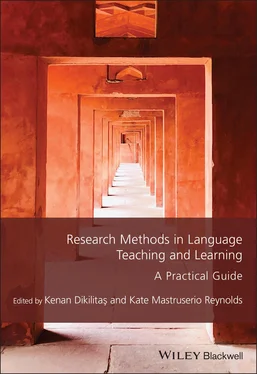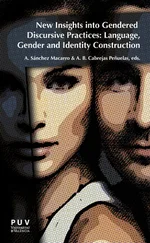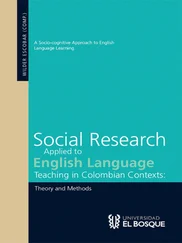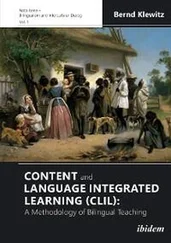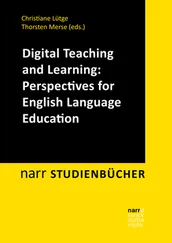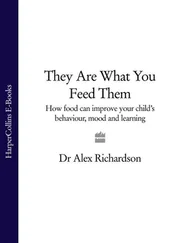Research Methods in Language Teaching and Learning
Здесь есть возможность читать онлайн «Research Methods in Language Teaching and Learning» — ознакомительный отрывок электронной книги совершенно бесплатно, а после прочтения отрывка купить полную версию. В некоторых случаях можно слушать аудио, скачать через торрент в формате fb2 и присутствует краткое содержание. Жанр: unrecognised, на английском языке. Описание произведения, (предисловие) а так же отзывы посетителей доступны на портале библиотеки ЛибКат.
- Название:Research Methods in Language Teaching and Learning
- Автор:
- Жанр:
- Год:неизвестен
- ISBN:нет данных
- Рейтинг книги:5 / 5. Голосов: 1
-
Избранное:Добавить в избранное
- Отзывы:
-
Ваша оценка:
- 100
- 1
- 2
- 3
- 4
- 5
Research Methods in Language Teaching and Learning: краткое содержание, описание и аннотация
Предлагаем к чтению аннотацию, описание, краткое содержание или предисловие (зависит от того, что написал сам автор книги «Research Methods in Language Teaching and Learning»). Если вы не нашли необходимую информацию о книге — напишите в комментариях, мы постараемся отыскать её.
Research Methods in Language Teaching and Learning
Research Methods in Language Teaching and Learning
Research Methods in Language Teaching and Learning — читать онлайн ознакомительный отрывок
Ниже представлен текст книги, разбитый по страницам. Система сохранения места последней прочитанной страницы, позволяет с удобством читать онлайн бесплатно книгу «Research Methods in Language Teaching and Learning», без необходимости каждый раз заново искать на чём Вы остановились. Поставьте закладку, и сможете в любой момент перейти на страницу, на которой закончили чтение.
Интервал:
Закладка:
Study Challenges, Constraints, and Limitations
The grounded theory allowed me to follow a systematic methodology for collecting and analyzing data throughout the study. Since I believed that the reality is in the data, not in the literature, I attempted to collect richer data from different perspectives and sources without relying on an existing theory. This increased the value of the research data. And I attempted to interpret it thoroughly. The major challenge was designing interventions according to students’ wants. Students reported mixed feelings about the content of classes and this made it difficult to design classes accordingly. Furthermore, students had limited repertoire of speaking activities and, therefore, they asked to include similar activities throughout the term. To avoid this, I sometimes needed to include different activities to contribute to students’ repertoires of speaking activities. I justified the content of classes each week so that students understand how I implemented student negotiation.
The study inevitably had its constraints and limitations. The main constraint was that it did not test whether student-negotiated speaking classes improved students’ EFL speaking competence. We avoided this because it would have involved the testing of speaking, which in turn would have made the research procedure very complex. Student negotiation is unlikely to improve students’ EFL speaking competence over a limited period of time, and a focus on testing the changes in students’ speaking competences might well have hindered the exploration of important issues that student-negotiated speaking classes had an impact on. In addition, testing students’ speaking performances could have influenced the trustworthiness of the data collected: students could be biased if the research involved testing their speaking competence. Instead, we focused on certain important issues that might indicate the development of EFL speaking skills, such as perceived competence, satisfaction with speaking ability, perceived involvement, anxiety, and willingness to communicate.
The main limitation of the research was its reliance on self-reported data. This is one of the limitations of questionnaires (Dörnyei, 2002) and interviews (Kvale, 1996), in that participants may not provide trustworthy answers, especially when they give information about their perceptions, because of such issues as social desirability and self-deception (Dörnyei, 2002). Although we attempted to overcome this problem through triangulating the data by using observations, this issue remains as one of the limitations. Furthermore, like all classroom research studies, the Hawthorne effect, which is the influence of being researched on behaviors of the participants (Cook, 1962), was a possible limitation of the study. Knowing that they were taking part in a research study, students may have behaved differently in speaking activities. These limitations are important issues to consider in future research studies within a related area.
Research Issues
Researchers need to address several issues to improve the quality of their research. An important criterion for good qualitative research is trustworthiness, which is mainly determined by “…whether the data analyses, reports and interpretations constitute honest and authentic reconstruction of the research…” (Burns, 2010b, p. 85). To ensure trustworthiness, researchers are expected to report their research (e.g., research context, and data research procedures) in a detailed, fair, and unbiased way (Burns, 1999; McKay, 2006; Patton, 1980). To address these issues, my dissertation and our articles presented detailed information regarding the context, problems, procedures, data collection tools, and finding of the research.
Some of the criteria for trustworthiness are credibility, dependability, and transferability (Lincoln & Guba, 1985). While credibility concerns whether the research findings are true and plausible, dependability is about the stability of the findings over time. To address these criteria, our research comprised eight interventions throughout a term to make sure that the data were comprehensive, and the findings were consistent. On the other hand, transferability refers to the applicability of the research to other contexts (McKay, 2006). Providing a detailed description of the research procedure is a significant way of increasing transferability.
A common way of ensuring the quality of qualitative research is using triangulation. According to Burns (1999), triangulation is a means of promoting the trustworthiness of a research study through including multiple perspectives on the topic under investigation. Triangulation is the combination of several observers, methods, and data sources (Denzin, 1970, cited in Patton, 1980), and, hence, makes it possible to avoid presuppositions or biases when drawing conclusions and reflecting on the data gathered (Burns, 2010a).
Patton (1980) proposed four types of triangulation: “methods triangulation,” “triangulation of sources,” “analyst triangulation,” and “theory/perspective triangulation.” While methods triangulation is collecting both quantitative and qualitative data, triangulation of sources involves using different qualitative data collection tools with the aim of checking whether these lead to similar findings. Analyst triangulation is the involvement of more people in the data analysis stage, and theory triangulation implies addressing different theoretical perspectives to analyze the same data set (Patton, 1980). My doctoral research rested upon methods triangulation and triangulation of sources, since both qualitative and quantitative data were collected by using four different methods.
From a narrower perspective, the quality of an action research study depends on the extent to which it improves educational practices (Burns, 1999). According to this assumption, our research can be considered beneficial, because the interventions had a positive impact on issues relevant to the effectiveness of EFL speaking classes. In addition to the criteria that are mentioned above, Burns (1999) synthesized different qualitative criteria for action research studies ( Table 3.3).
Table 3.3 Validity criteria for action research (Burns, 1999, pp. 161–162)
| Validity type | The description | |
|---|---|---|
| 1. | Democratic validity | This criterion relates to the extent to which the research is truly collaborative and allows for the inclusion of multiple voices. |
| 2. | Outcome validity | This criterion relates to the notion of actions leading to outcomes that are “successful” within the research context. |
| 3. | Process validity | This criterion raises questions about the “dependability” and “competency of the research.” Key question here is: Is it possible to determine how adequate the process of conducting the research is? |
| 4. | Catalytic validity | This criterion relates to the extent to which the research allows participants to deepen their understanding of the social realities of the context and how they can make changes within it. |
| 5. | Dialogic validity | This criterion is parallel to the process of peer review, which is commonly used in academic research. Typically, the value or “goodness” of the research is monitored by peer review for publication in academic journals. |
The research had democratic validity, because the researcher and the teacher worked collaboratively in designing classes based on the data collected from students. It also had process validity since the research process lasted a term. Catalytic validity was relevant to the research topic because student negotiation encouraged participants to be critical about the usefulness of class designs and reflect on their engagement in speaking activities. Dialogic validity was also fulfilled in the study as the research was carried out under the supervision of two specialists.
Читать дальшеИнтервал:
Закладка:
Похожие книги на «Research Methods in Language Teaching and Learning»
Представляем Вашему вниманию похожие книги на «Research Methods in Language Teaching and Learning» списком для выбора. Мы отобрали схожую по названию и смыслу литературу в надежде предоставить читателям больше вариантов отыскать новые, интересные, ещё непрочитанные произведения.
Обсуждение, отзывы о книге «Research Methods in Language Teaching and Learning» и просто собственные мнения читателей. Оставьте ваши комментарии, напишите, что Вы думаете о произведении, его смысле или главных героях. Укажите что конкретно понравилось, а что нет, и почему Вы так считаете.
